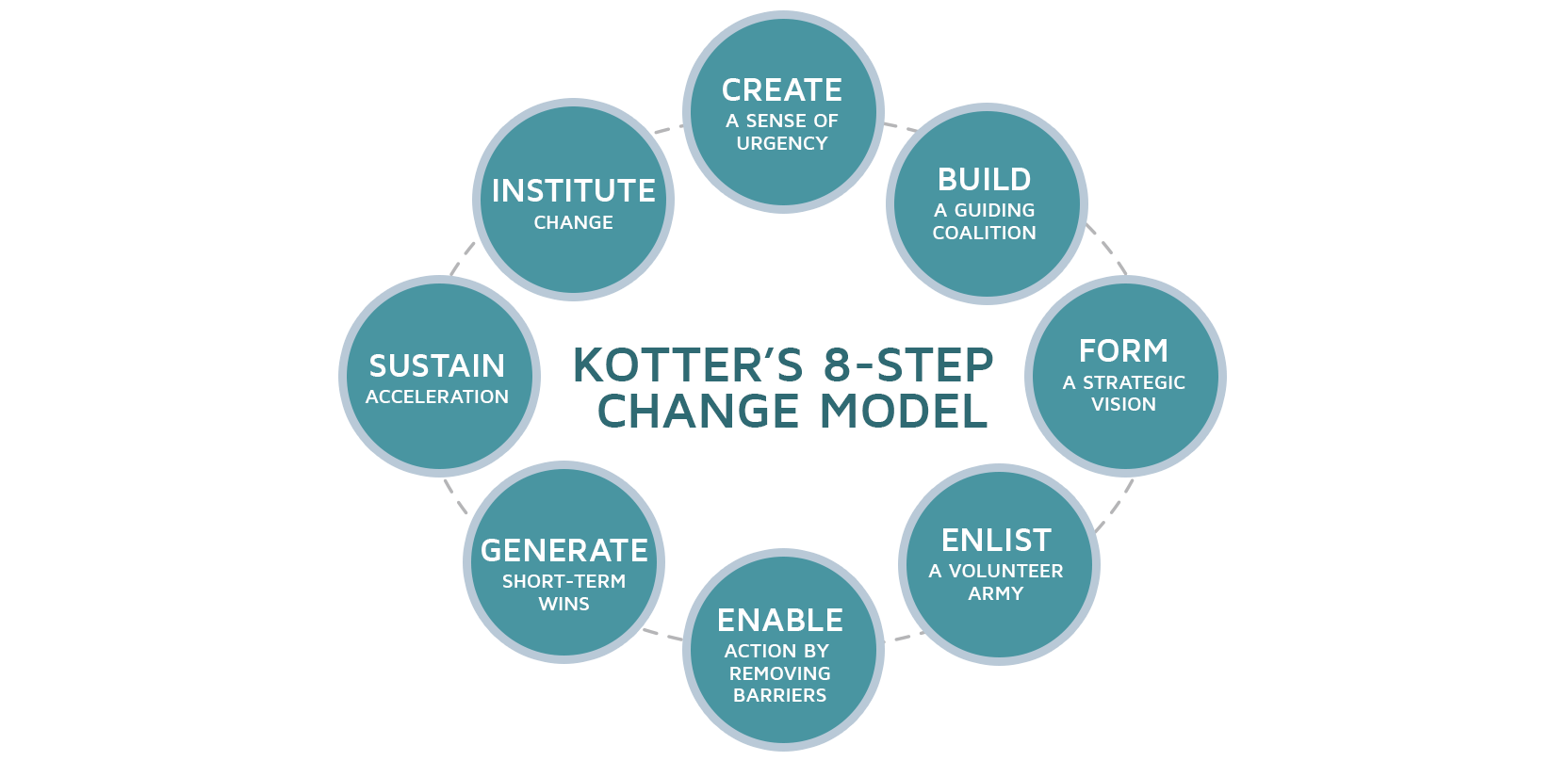Key Considerations for Managing Change
The way our clients react to change and their level of change acceptance can influence their success as much as their budget, choice of software, or technical aptitude. How do we know? We’ve been helping public sector finance and budget departments across North America improve and automate their most time-consuming and tedious business processes for nearly 30 years.
So, we thought it might be helpful to share highlights from research behind the importance and key features of change management.
What Is Change?
Change is both the process through which something is made different (a verb) and the result of that process (a noun).
The adaptation, growth, and very survival of human beings has long depended on our ability to manage change. Consider the crucial advent of fire-building or weapon-making, or the more contemporary prerequisite of technological savvy for success in the modern workplace.
Organizational Change
Change management within an organization involves the activities, functions, and tools it uses to deal with something new. As an example, institutions of all kinds use the tools of training and development to ensure their employees’ sustained competence and efficacy amid the ever-changing dynamics of the workplace.
Global research and advisory company Gartner reports that today’s average organization has undergone five significant organizational changes in the past three years—and almost 75% of those expect to expand major change initiatives over the next three years.
Change initiatives range in scope and complexity from process improvements to mergers and acquisitions. Timeframes for organizational change can range from slow and gradual, like rethinking each individual step in a process over time, to quick and total, like suddenly adopting an entirely new system or approach.
As with individuals, an organization’s ability to survive, stay relevant, compete, grow, and last, depends on its ability to manage change—both internally and externally.
WANT TO LEARN MORE?
In his 1996 book, “Leading Change,” John Kotter was among the first to
apply the academic theory of change management to the world of business.
His eight-step change management process remains relevant to this day.

Other notable change management models include
Lewin’s Change Management Model, and Prosci’s ADKARⓇ Model
Change Is Difficult
Despite the inevitability of change, people (by nature) prefer stability over anything new or unfamiliar. Known as cognitive bias, this tendency is thought to be an unconscious process, whereby people cling to a belief system despite being presented with a better solution.
DID YOU KNOW?
One 2019 study found that monkeys (capuchin and rhesus macaques)
were “significantly more likely to adopt new and more efficient
shortcuts to attaining their goals than humans.”

The McKinsey consulting group reports that 70% of all change initiatives fail. The reasons for failure include:
- Misalignment of values reflected in the change itself and values of the people experiencing the change
- Failure to manage employees’ attitudes toward change
- Lack of awareness of change’s potential benefits
- Change is seen as unfair or punishment
- Staff members may fear:
- A shift in duties
- Losing their job to automation
- Revealing weakness/incompetence in technology or role
- Loss of control
- Ripple effects
- More work
An unrealistic timeline or insufficient employee participation in training can further hinder the success of a change initiative. Unsuccessfully managing a workforce through change can be costly; dissatisfied employees are known to be less productive and are more likely to leave an organization.
The development of negative attitudes and adverse reactions toward change is known as resistance to change. Research suggests that employees’ readiness for change strongly influences their resistance, by transforming their attitudes. In other words, change is more successful when employees are prepared for it, not surprised by it.
DID YOU KNOW?
The Society for Human Resource Management
(SHRM) has identified six states of change readiness:
indifference, rejection, doubt, neutrality, experimentation, and commitment.
Change in the Public Sector
Is Especially Difficult
Government entities are typically slower to accept and adopt changes—like the introduction of new technology or business processes—than organizations in the private sector. Reasons include:
- Less funding
- Higher public scrutiny
- Lack of internal informational technology (IT) staff or capacity
- Siloed duties and departments
- Complicated contract processes
For some public sector organizations, slow adoption of technology and process change has led to more expensive and burdensome service provision. When they embrace change, they:
- Help eliminate time-consuming, frustrating, and “glitchy” processes
- Can focus on the actual work of providing services
- Make their staff more accessible to the public
- Get help more efficiently to those who need it
The benefits of change in the public sector are clear. The challenge is that government employees may be among the least comfortable or familiar with change. Consequently, greater change management support is likely necessary in those settings.
To Be Successful, You Must Manage Change
The Importance of Leadership
Both a systematic approach (strategy) and effective leadership are critical to the success of any organizational change endeavor.
A change management strategy provides leaders with steps to successfully guide an organization through change, while limiting disruption and unexpected consequences. The goal may be to change a process or approach, but the key to success is the ability to effectively lead people through the change. Keep It Human
Keep It Human
The fundamental common denominator among successful change initiatives is people. To effectively implement change, leaders must take its impact on people into account. The following steps can help garner stakeholder trust and promote acceptance (and even appreciation) of a proposed change:
- Clarify the desired end result in advance.
- Highlight pain points and the need for change.
- Make the change as specific as possible.
- Be transparent about its benefits and challenges.
- Listen to and address employees’ reactions.
- Establish their commitment to the initiative.
Remember the study that found monkeys adapted to change
more readily than humans? Turns out, when the benefits of using a new
approach were made clear, “humans were more likely to get on board.”
Why It Matters
The importance and impact of effective change management cannot be overstated. Financial, cultural, institutional, and other factors make organizational change in the public sector particularly challenging.
The right approach is vital to the success of any change initiative. Securing employee buy-in not only makes change easier, it establishes a relationship of trust, reducing resistance overall and minimizing the need to campaign for future reengagement and support.
With the right combination of communication, preparation, planning, and support, a well-managed change can dramatically elevate both the quality of employees’ day-to-day experience and the focus of their work.
Let Us Help
Decades in the business of change have informed FHB’s successful approach to streamlining and automating even the most deeply ingrained and archaic business processes in the public sector. Schedule a meeting with us today to explore how we can help manage your organization’s need for change.
© 2025 FH Black Inc. All rights reserved. Content may not be reproduced, excerpted, distributed, or transmitted without prior written consent.



